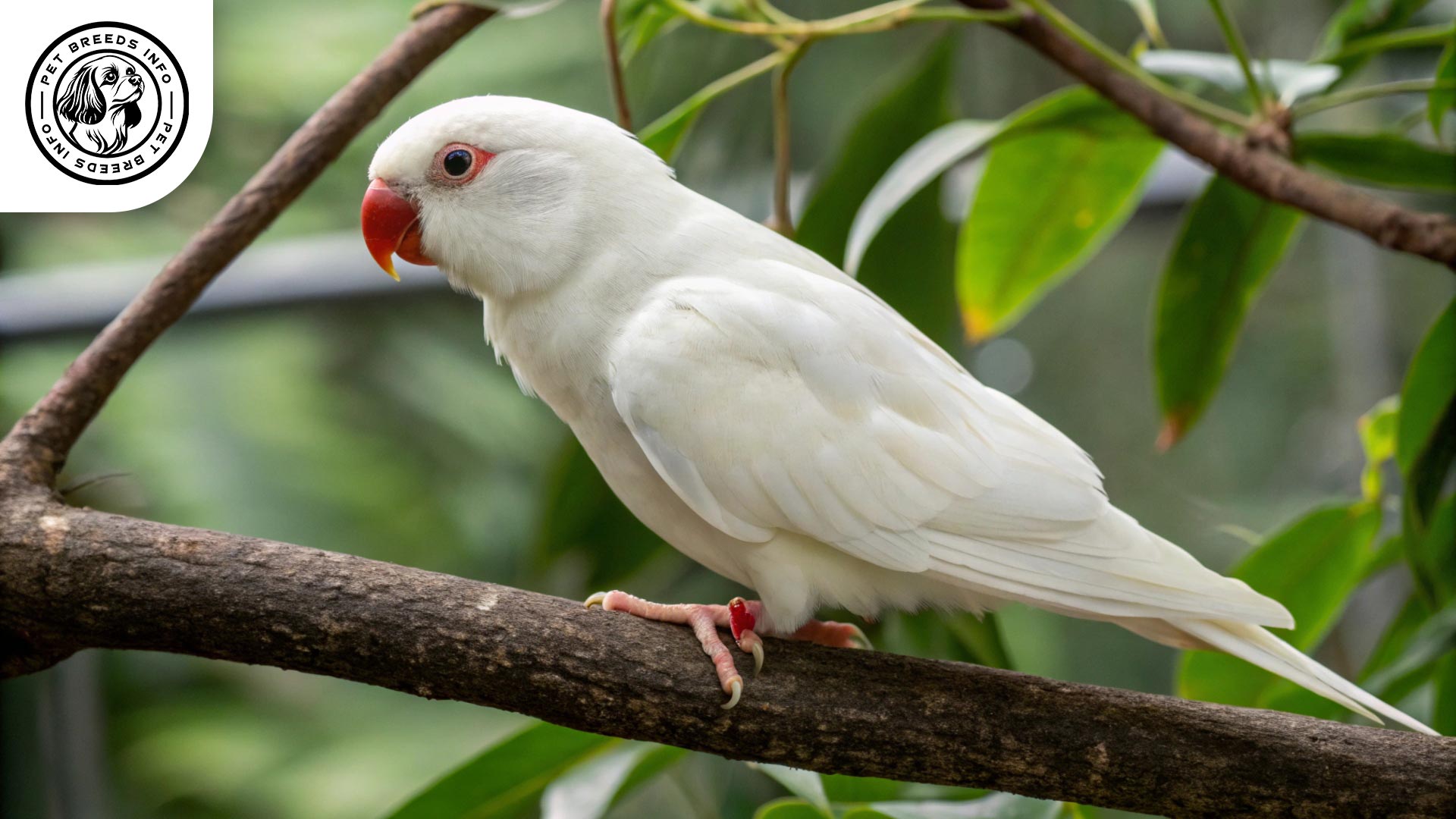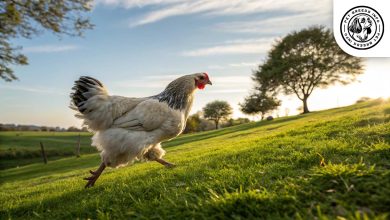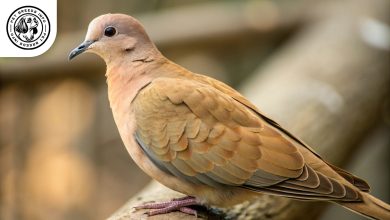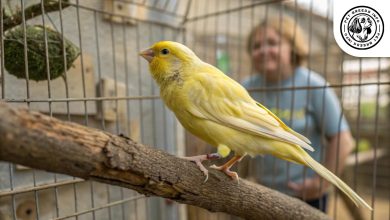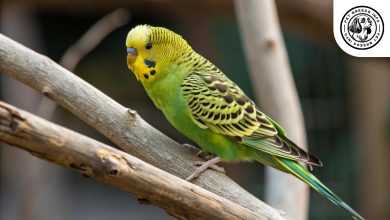Albino Lovebird Bird: Personality, Lifespan, Food & Care
General Introduction of the Breed
The Albino Lovebird is a stunning, rare mutation of the Peach-Faced Lovebird (Agapornis roseicollis). While not a separate species, the Albino Lovebird is known for its striking all-white plumage and red eyes. These birds originate from arid regions of Africa, specifically Namibia and Angola. They have gained popularity as pets due to their affectionate nature and beautiful appearance.
Table of Contents
| Common Name: | Albino Lovebird |
| Scientific Name: | Agapornis roseicollis (mutation) |
| Origin: | Arid regions of Africa (Namibia and Angola) |
| Size: | 6-7 inches (15-18 cm), 1.5-2 ounces (40-60 grams) |
| Lifespan: | 10-15 years |
| Talking Ability: | (Not explicitly mentioned, but lovebirds are generally not known for extensive talking abilities) |
| Colors: | Pure white plumage, red eyes, pale beak |
| Noise Level: | Vocal (chirps and whistles) |
| Social Behavior: | Highly social, forms strong bonds with owners and partners, requires interaction |
Physical Characteristics
Albino Lovebirds are small parrots, typically reaching a length of 6-7 inches (15-18 cm) and weighing around 1.5-2 ounces (40-60 grams). They have smooth, soft feathers that lack pigmentation, resulting in a pure white appearance. Their eyes are distinctly red due to the absence of melanin.
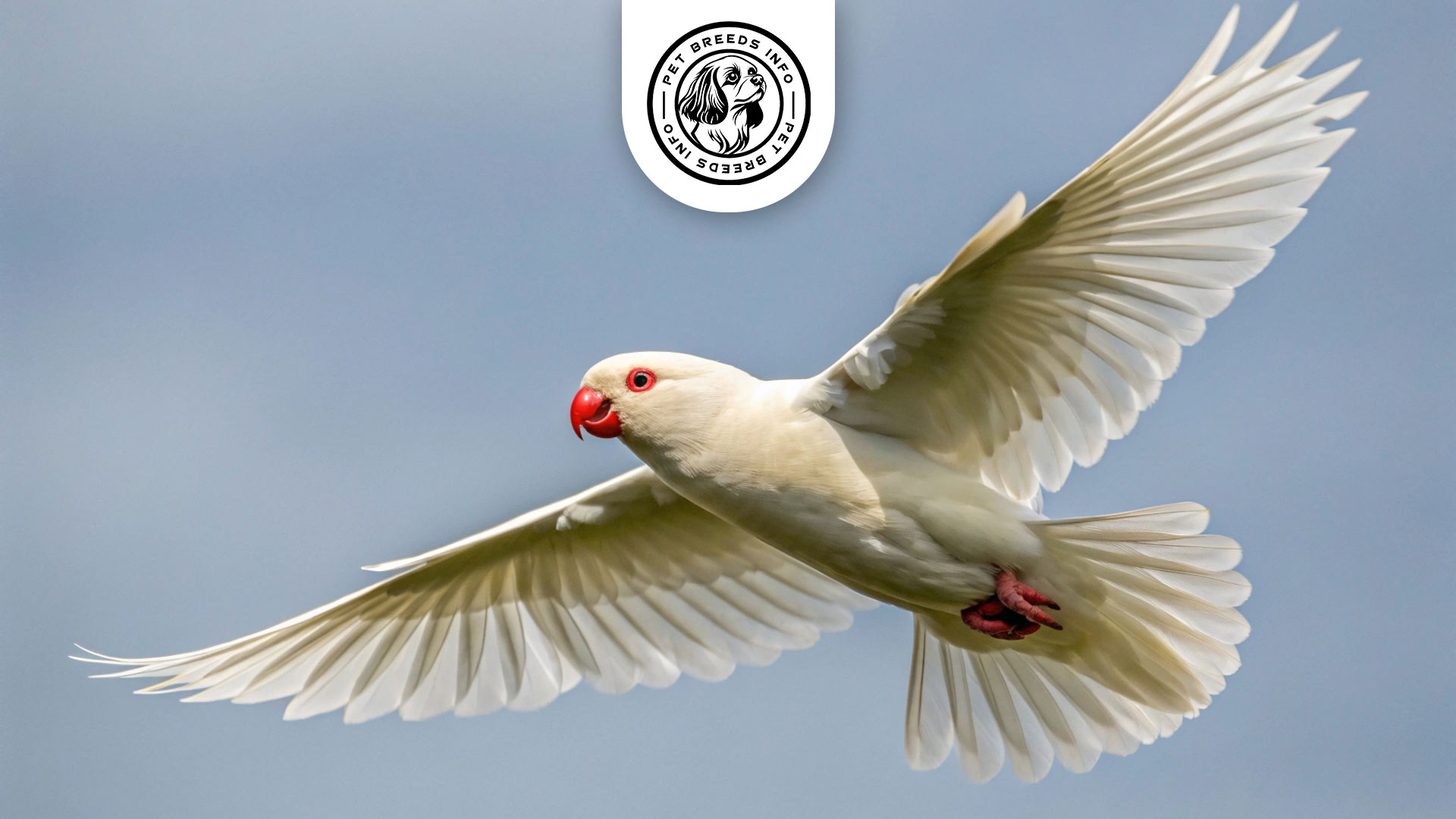
These birds have a small, curved beak that is pale in color. Their wings and tail are proportionate, giving them an elegant appearance. Albino Lovebirds have a compact build and a strong, agile body, making them excellent fliers.
Read More: Golden Conure
Personality and Temperament
Albino Lovebirds are highly intelligent and curious birds that enjoy interacting with their owners. They require mental stimulation and social engagement to remain happy and healthy. Their energy levels are high, and they love to play and explore their environment.
They form strong bonds with their owners and partners, often displaying affectionate behaviors such as preening and cuddling. They can be quite vocal, using chirps and whistles to communicate their emotions. Proper socialization from a young age helps ensure a friendly and well-adjusted bird.
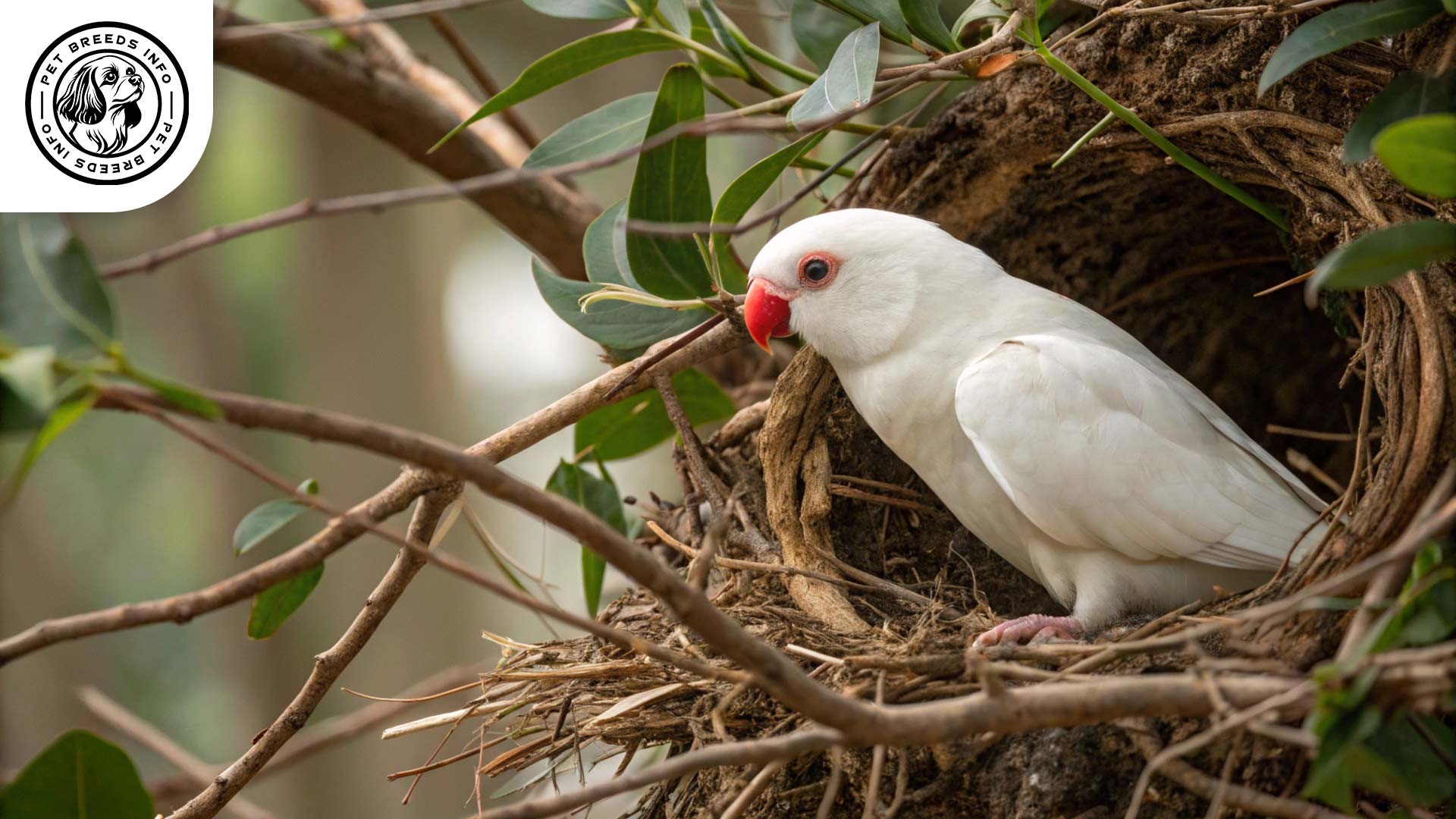
Care and Maintenance Requirements
Albino Lovebirds require regular exercise and interaction. A spacious cage with enough room for flight and activity is ideal. They thrive in environments where they receive plenty of human attention and companionship.
Grooming includes regular nail trimming and occasional bathing or misting to keep their feathers clean. Their cage should be cleaned frequently to prevent bacterial growth. Due to their sensitivity to extreme temperatures, they should be kept in a stable, moderate climate.
Diet and Nutrition
A balanced diet for an Albino Lovebird consists of high-quality pellet food, fresh fruits, vegetables, and occasional treats like seeds and nuts. Dark leafy greens, carrots, apples, and bell peppers are great additions to their diet.
Certain foods, such as avocado, chocolate, caffeine, and onions, should be avoided as they are toxic to birds. Providing fresh water daily and maintaining a varied diet will ensure optimal health.
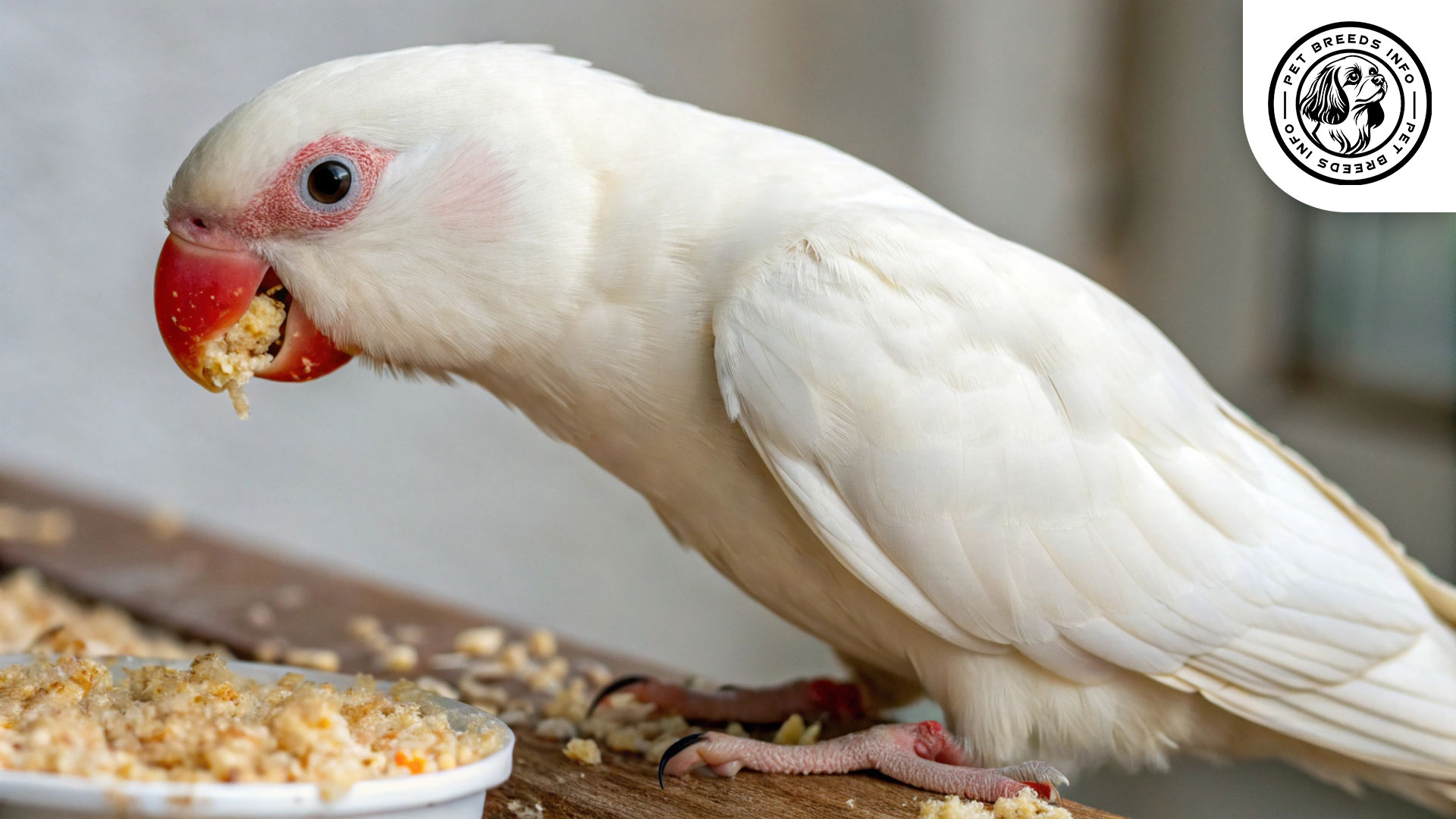
Health and Common Medical Issues
Common health issues in Albino Lovebirds include respiratory infections, feather plucking due to stress, and nutritional deficiencies. Regular vet check-ups help detect and prevent potential problems. Providing a stress-free and balanced environment promotes longevity.
The average lifespan of an Albino Lovebird is 10-15 years when given proper care. Essential vaccinations and parasite prevention should be maintained under the guidance of an avian veterinarian.
Read More: Gouldian Finch Bird
Training and Behavior Management
Albino Lovebirds are relatively easy to train with patience and positive reinforcement. Teaching basic commands such as step-up and recall can improve their relationship with their owner.
Early socialization and exposure to different environments help develop a well-adjusted bird. Using treats and praise works best when reinforcing good behavior, while punishment should be avoided as it can lead to trust issues.
Interaction with Other Animals and Humans
Albino Lovebirds are affectionate and enjoy the company of their owners. They do well in households where they receive ample attention. While they can coexist with other birds, proper introductions are necessary to avoid territorial disputes.
They are suitable for both individuals and families but may require supervision around young children to ensure gentle handling. Their social nature makes them thrive best in homes where they receive regular interaction.
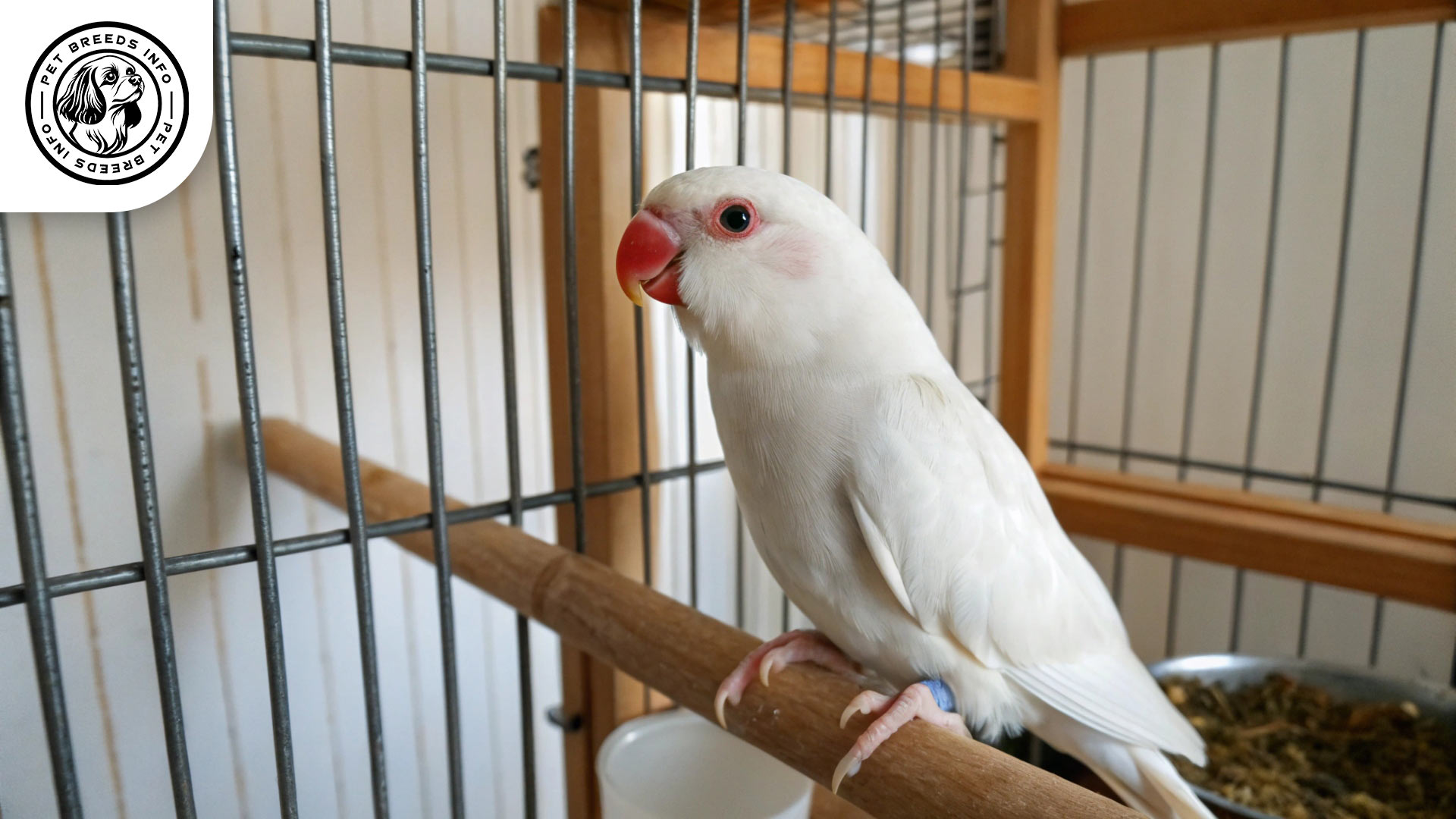
Price and Availability
The price of an Albino Lovebird varies based on location and breeder reputation, typically ranging from $50 to $150. When adopting or purchasing, it is essential to choose a reputable breeder or avian rescue to ensure a healthy and well-socialized bird.
Potential owners should research and prepare for the long-term commitments of owning a lovebird before bringing one home.
Conclusion and Final Thoughts
Albino Lovebirds are beautiful, affectionate, and social pets that require dedicated care. They are an excellent choice for bird enthusiasts who can provide daily interaction, a balanced diet, and an enriching environment.
Due to their strong attachment needs, they may not be suitable for owners who are frequently away. However, for those willing to invest time and love, these birds make wonderful and charming companions.
Read More: Giant White Turkey
FAQ
What makes an Albino Lovebird look different?
They have all-white feathers and red eyes due to a lack of pigmentation.
Are Albino Lovebirds good pets?
Yes, they are affectionate and enjoy interacting with their owners, but they need a lot of attention.
What kind of environment do Albino Lovebirds need?
They need a spacious cage, regular interaction, and a stable, moderate temperature.
What do Albino Lovebirds eat?
Their diet should include high-quality pellets, fresh fruits, and vegetables.
How long do Albino Lovebirds typically live?
With proper care, they can live for 10-15 years.
